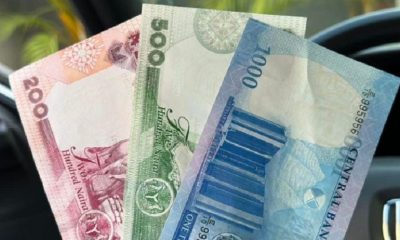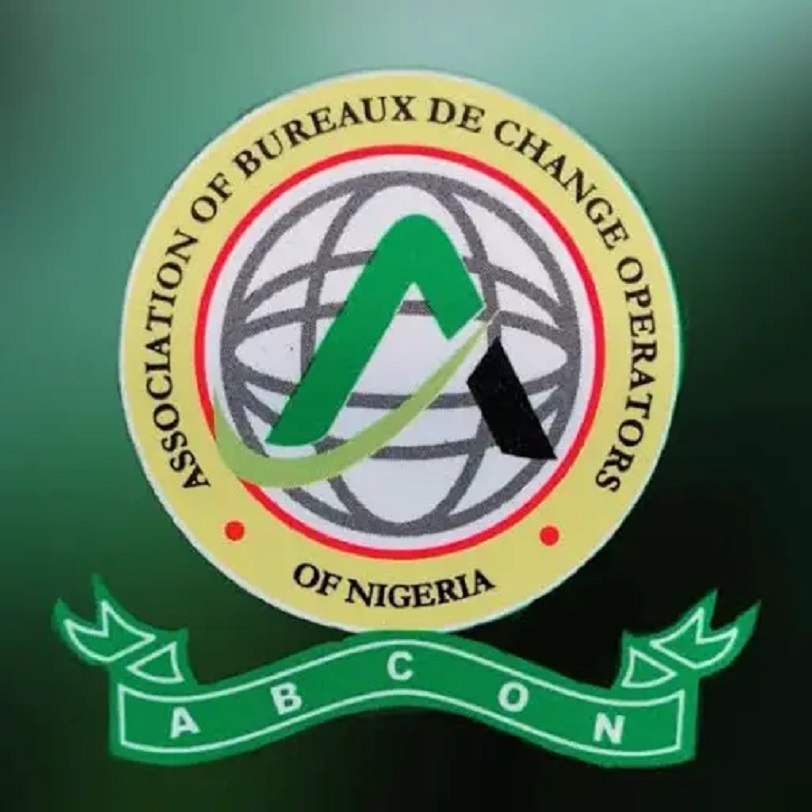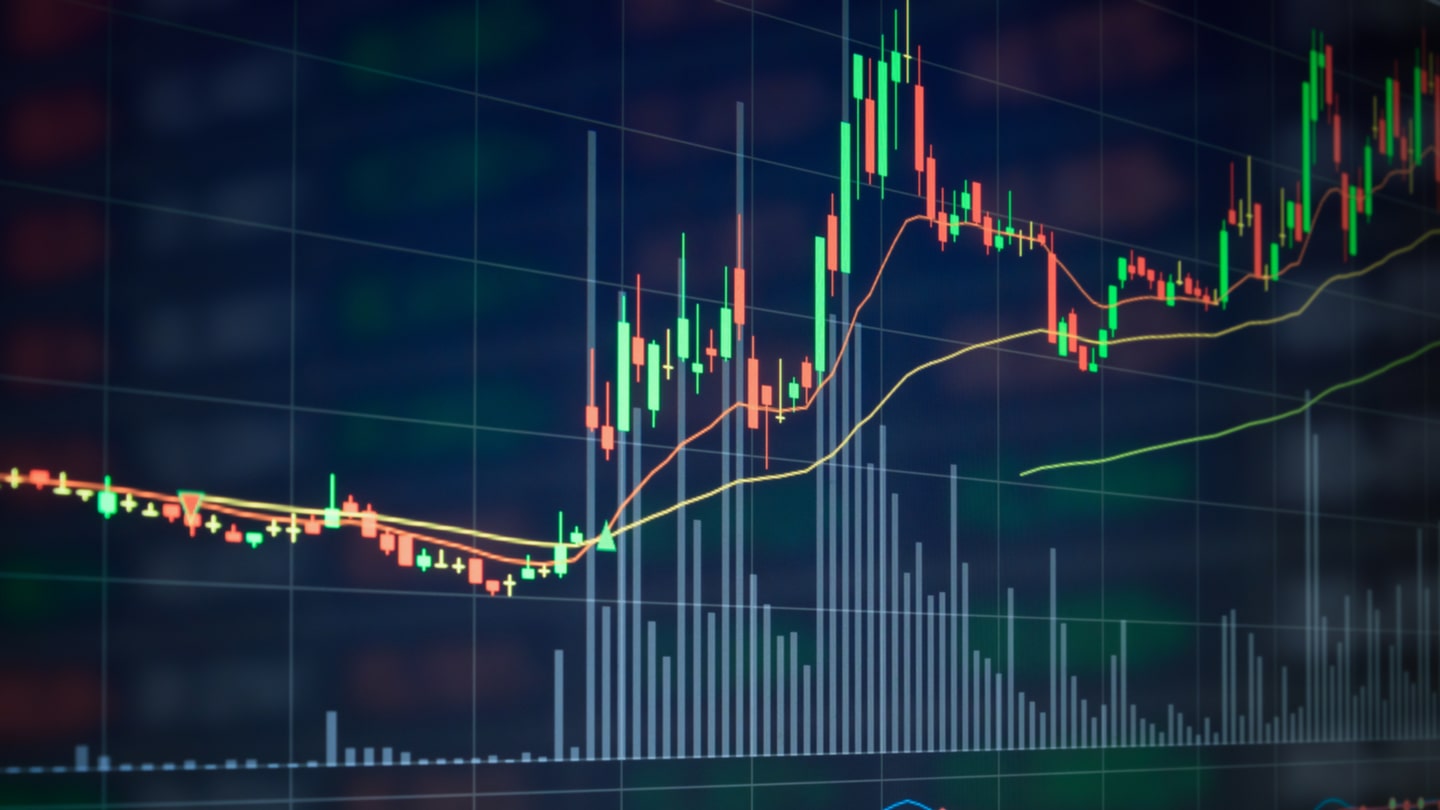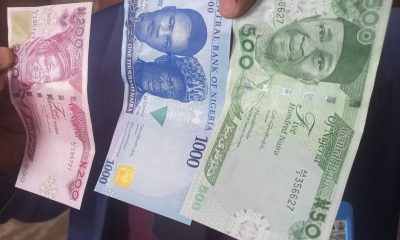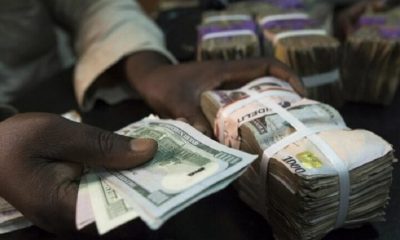Economy
The Gains of Investors’ and Exporters’ (I&E) FX Window
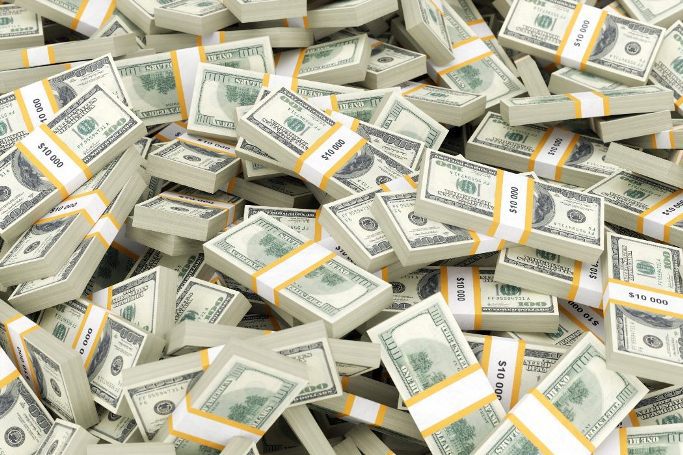
The implementation of the Investors’ and Exporters’ Foreign Exchange (FX) Window has increased the supply of foreign exchange into the Nigerian economy.
In addition, it has attracted more investments into Nigeria. Consequently, we observed relative stability in the foreign exchange market. Companies and individuals are now able to access more foreign exchange in the market than before to carry out eligible transactions and economic activities are gradually picking up.
The Central Bank of Nigeria (CBN) introduced the special window for investors, exporters and end-users of FX on April 21, 2017 as part of its efforts to deepen the FX market and accommodate all the FX obligations.
According to the CBN, the objective of the window is to increase liquidity in the FX market and ensure timely execution and settlement of eligible transactions. The eligible transactions in the window are: 1) Invisible transactions such as loan repayment, capital repatriation, management services fees, consultancy fees, software subscription, technology transfer agreements, personal home remittances and any other eligible invisible transactions. 2) Bills for Collection 3) Any other trade-related obligations (at the instance of the customers).
The CBN stipulates that the supply of foreign currency to the window shall be through portfolio investors, exporters, authorized dealers and other parties with foreign currency to exchange to Naira. The CBN is also a market participant in the window to promote liquidity and professional market conducts.
As at August 11, 2017 the total turnover in the I&E FX window stood at US$7.62bn. Our monthly analysis of the turnover shows that it increased consistently from US$0.61bn in April 2017 to US$2.17bn in July 2017.
At US$1.7bn as of August 11, 2017, there are indications that the turnover in August 2017 will be higher than the July 2017 turnover. The introduction of the window has encouraged exporters to bring back their export proceeds to the country and through the official sources, thus increasing the stock of foreign exchange in the country.
Another important gain of the window is that it has attracted more foreign capital into Nigeria for various forms of investment. Our analysis of the capital importation data from the CBN between January and May, 2017 shows that there was a growth in capital importation in 2017 compared with 2016.
The total capital importation in the five months ended May 2017 stood at US$2.09bn representing a growth of 82.78% compared with the US$1.42bn recorded in the corresponding period of 2016. Other Investments (OI) – Loans attracted the highest capital of US$886mn between January and May in 2017, followed by Foreign Direct Investment (FDI) – Equity of US$436mn and closely followed by
Foreign Portfolio Investment (FPI) – Equity of US$413mn.
We also observed that the capital imported into Nigeria increased significantly from US$244mn in March to US$563mn in April 2017 following the commencement of the programme. The increased supply of FX led to an appreciation in the value of the Naira.
In the parallel market, the value of the Naira appreciated by 7.87% from N396/US$ on April 25, 2017 to N367.50/US$ as at August 11, 2017. At the I&E window, the Naira gained 2.82% from N374.96/US$ on April 25, 2017 to N364.78/US$ as at August 11, 2017. In the inter-bank market it also gained 0.1% from N305.9/US$ on April 25, 2017 to N305.65/US$ on August 11, 2017. The 30-day moving average external reserves also appreciated by 1.95% during the period while the equity market appreciated by 40.66% during the same period.
The manufacturing and non-manufacturing purchasing managers’ indices appreciated by 5.9% and 9.9% respectively during the period. All these leading indicators show the improved performance of the Nigerian economy during the period.
Although we commend the initiative and note the gains the Nigerian economy recorded since its implementation, we believe that the gains could be short-lived in the absence of complementary measures that will improve the competitiveness of the Nigerian economy.
There is the need for concerted efforts to improve physical and human infrastructure in order to increase local production to meet local consumption and boost exports to generate diversified foreign exchange earnings.
Economy
NBA Demands Suspension of Controversial Tax Laws
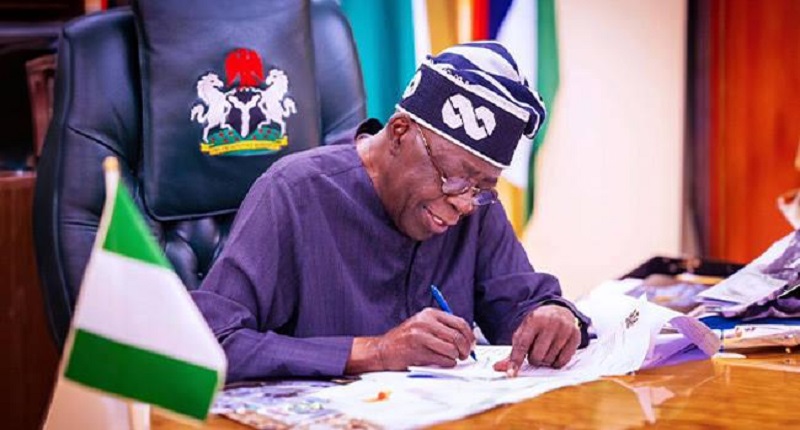
By Modupe Gbadeyanka
The federal government has been asked by the Nigerian Bar Association (NBA) to suspend the implementation of the controversial tax laws.
In a reaction to the tax reform acts, the president of the group, Mr Afam Osigwe (SAN), the suspension of the laws would allow for a proper investigation into allegations of alterations in the gazetted and harmonised copies.
A member of the House of Representatives, Mr Abdussamad Dasuki, alleged that some parts of the laws passed by the parliament were different from the gazetted copy.
To address the issues raised, the NBA said it is “imperative that a comprehensive, open, and transparent investigation be conducted to clarify the circumstances surrounding the enactment of the laws and to restore public confidence in the legislative process.”
“Until these issues are fully examined and resolved, all plans for the implementation of the Tax Reform Acts should be immediately suspended,” the association declared.
It noted that the controversies “raise grave concerns about the integrity, transparency, and credibility of Nigeria’s legislative process.”
“These developments strike at the very heart of constitutional governance and call into question the procedural sanctity that must attend lawmaking in a democratic society,” it noted.
“Legal and policy uncertainty of this magnitude has far-reaching consequences. It unsettles the business environment, erodes investor confidence, and creates unpredictability for individuals, businesses, and institutions required to comply with the law. Such uncertainty is inimical to economic stability and should have no place in a system governed by the rule of law.
“Nigeria’s constitutional democracy demands that laws, especially those with profound economic and social implications, emerge from processes that are transparent, accountable, and beyond reproach. Anything short of this undermines public trust and weakens the foundation upon which lawful governance rests.
“We therefore call on all relevant authorities to act swiftly and responsibly in addressing this controversy, in the overriding interest of constitutional order, economic stability, and the preservation of the rule of law,” the organisation stated.
Economy
MRS Oil, Two Others Raise NASD Bourse Higher by 0.52%
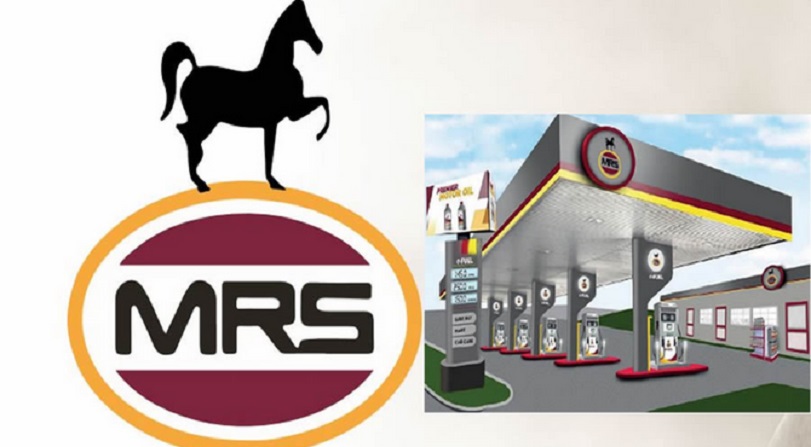
By Adedapo Adesanya
Demand for hot stocks, including MRS Oil Plc, buoyed the NASD Over-the-Counter (OTC) Securities Exchange by 0.52 per cent on Tuesday, December 23.
The energy company was one of the three price gainers for the session as it chalked up N19.69 to sell at N216.59 per share versus the previous day’s value of N196.90 per share.
Further, FrieslandCampina Wamco Nigeria Plc gained N2.95 to close at N56.75 per unit versus N53.80 per unit and Golden Capital Plc appreciated by 84 Kobo to N9.29 per share from Monday’s N8.45 per share.
Consequently, the market capitalisation went up by N10.95 billion to N2.125 trillion from N2.125 trillion and the NASD Unlisted Security Index (NSI) rose by 18.31 points to 3,570.37 points from 3,552.06 points.
Yesterday, the NASD bourse recorded a price loser, the Central Securities Clearing System Plc (CSCS), which gave up 17 Kobo to close at N33.70 per unit against the previous trading value of N33.87 per unit.
The volume of securities traded at the session went down by 97.6 per cent to 297,902 units from the previous day’s 12.6 million units, the value of securities decreased by 98.5 per cent to N10.5 million from N713.6 million, and the number of deals remained flat at 32 deals.
By value, Infrastructure Credit Guarantee Company (InfraCredit) Plc ended as the most actively traded stock on a year-to-date basis with 5.8 billion units exchanged for N16.4 billion. This was followed by Okitipupa Plc, which traded 178.9 million units valued at N9.5 billion, and MRS Oil Plc with 36.1 million units worth N4.9 billion.
In terms of volume, also on a year-to-date basis, InfraCredit Plc led the chart with a turnover of 5.8 billion units traded for N16.4 billion. Industrial and General Insurance (IGI) Plc ranked second with 1.2 billion units sold for N420.7 million, while Impresit Bakolori Plc followed with the sale of 536.9 million units valued at N524.9 million.
Economy
NGX All-Share Index Soars to 153,354.13 points
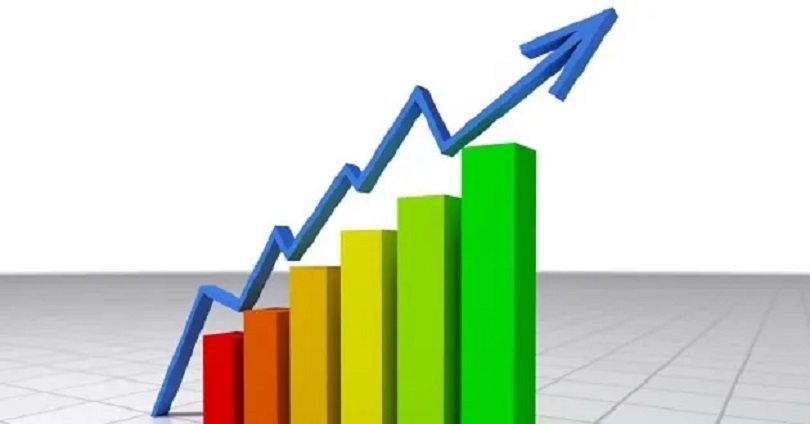
By Dipo Olowookere
It was another bullish trading session for the Nigerian Exchange (NGX) Limited as it closed higher by 0.59 per cent on Tuesday.
The market further rallied due to continued interest in large and mid-cap stocks on the exchange by investors rebalancing their portfolios for the year-end.
Yesterday, Aluminium Extrusion sustained its upward trajectory after it further appreciated by 9.96 per cent to N14.90, as Austin Laz gained 9.81 per cent to close at N2.91, Custodian Investment improved by 9.69 per cent to N38.50, and First Holdco soared by 9.35 per cent to N50.30.
Conversely, Royal Exchange declined by 7.22 per cent to N1.80, Champion Breweries shrank by 6.57 per cent to N15.65, NASCON lost 5.36 per cent to trade at N105.05, Sovereign Trust Insurance depreciated by 5.28 per cent to N3.77, and Japaul went down by 4.51 per cent to N2.33.
At the close of business, 29 shares ended on the gainers’ table and 27 shares finished on the losers’ log, representing a positive market breadth index and bullish investor sentiment.
This raised the All-Share Index (ASI) by 895.06 points to 153,354.13 points from 152,459.07 points and lifted the market capitalisation by N579 billion to N97.772 trillion from the previous day’s N97.193 trillion.
VFD Group finished the day as the busiest stock after it recorded a turnover of 192.0 million units worth N2.1 billion, GTCO exchanged 63.5 million units valued at N5.6 billion, Access Holdings traded 49.8 million units for N1.0 billion, First Holdco sold 45.8 million units valued at N2.3 billion, and Secure Electronic Technology transacted 38.3 million units worth N28.4 million.
In all, market participants bought and sold 677.4 million units valued at N20.8 billion in 27,589 deals compared with the 451.5 million units worth N13.0 billion traded in 33,327 deals on Monday, showing an improvement in the trading volume and value by 50.03 per cent and 60.00 per cent apiece, and a shortfall in the number of deals by 17.22 per cent.
-

 Feature/OPED6 years ago
Feature/OPED6 years agoDavos was Different this year
-
Travel/Tourism9 years ago
Lagos Seals Western Lodge Hotel In Ikorodu
-

 Showbiz3 years ago
Showbiz3 years agoEstranged Lover Releases Videos of Empress Njamah Bathing
-

 Banking8 years ago
Banking8 years agoSort Codes of GTBank Branches in Nigeria
-

 Economy3 years ago
Economy3 years agoSubsidy Removal: CNG at N130 Per Litre Cheaper Than Petrol—IPMAN
-

 Banking3 years ago
Banking3 years agoFirst Bank Announces Planned Downtime
-

 Banking3 years ago
Banking3 years agoSort Codes of UBA Branches in Nigeria
-

 Sports3 years ago
Sports3 years agoHighest Paid Nigerian Footballer – How Much Do Nigerian Footballers Earn



